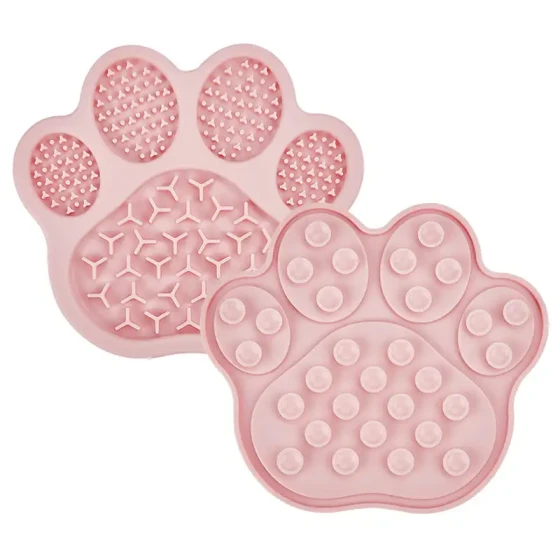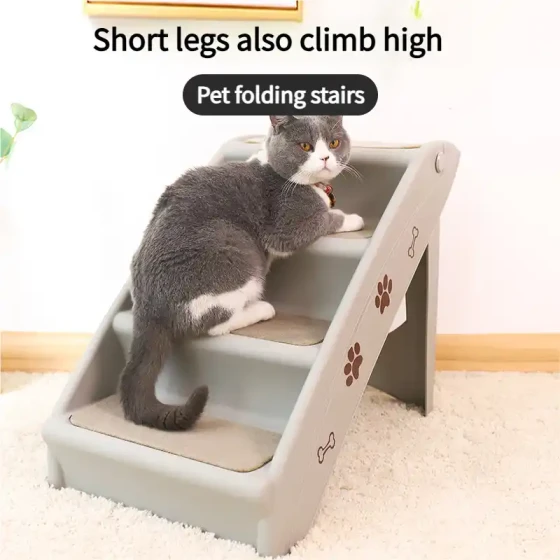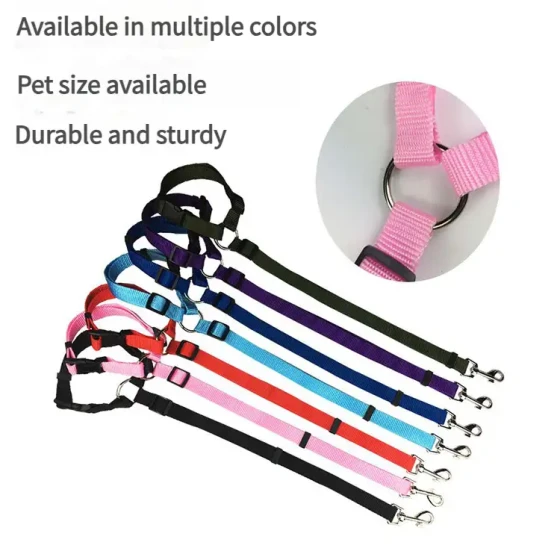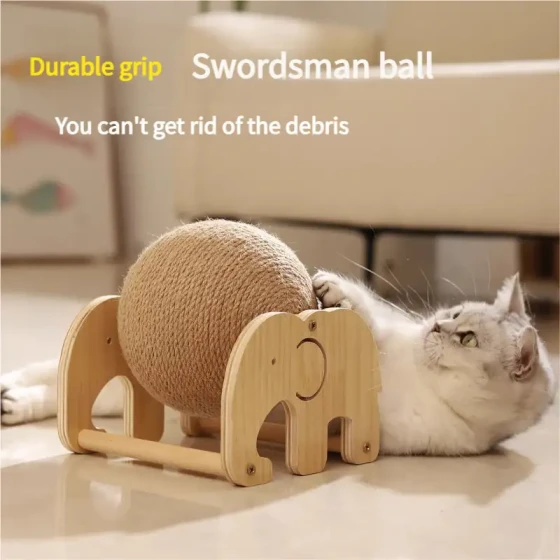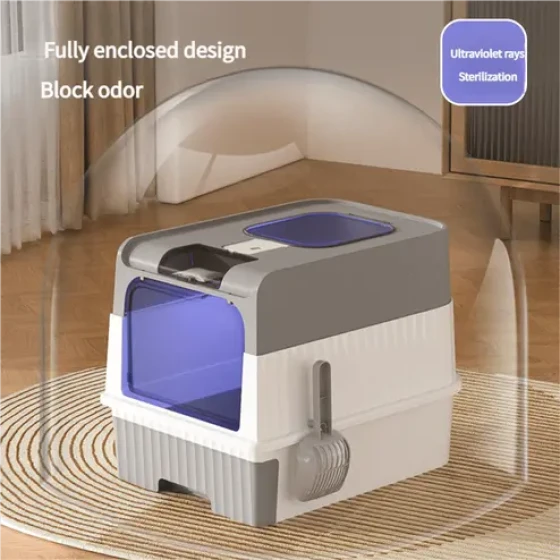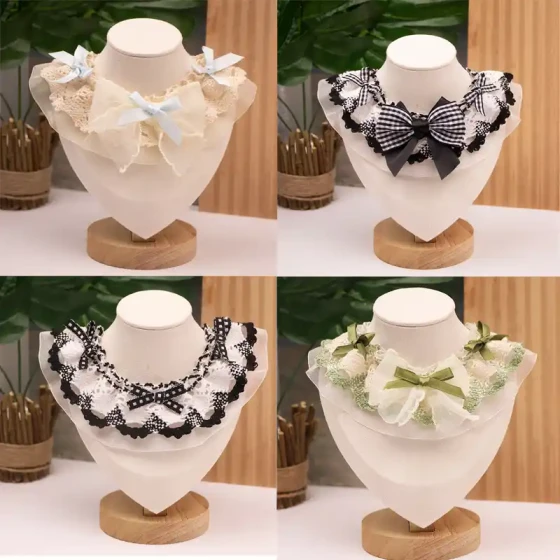What cat food is better for tabby cats_Picking food guide
The legendary figure roaming the vast land of China, from farmlands to city apartments, that familiar intertwining of orange, white, black, and gray fur always evokes a deep sense of affection — yes, I’m talking about the tabby cat. This common relative of the “Big Orange” and “Coal Balls” has won countless pet owners’ hearts with its robust vitality, independent personality, and those eyes full of wisdom.
However, when we invite such an "outdoor survival expert" into our homes, making them our soft and cute companion napping on our laps, a practical question arises: they may have once relied solely on themselves to solve hunger in the wild, but now, as family members, how should we provide them with the best “logistical support”? Especially the cat food they eat every day — what exactly is this stuff, and how to choose the most suitable “ration” for our tabby lord?
Don’t worry, cat food is a deep and complex topic. But setting aside marketing hype and conceptual exaggerations, when you return to the essence, you will find that choosing food for tabbies follows the same core logic based on their physiological needs as for any other cat. After all, cats, whether aloof Persians, elegant Siamese, or our down-to-earth tabbies, belong to the same species: Felis catus, felines, and more importantly, they are obligate carnivores.
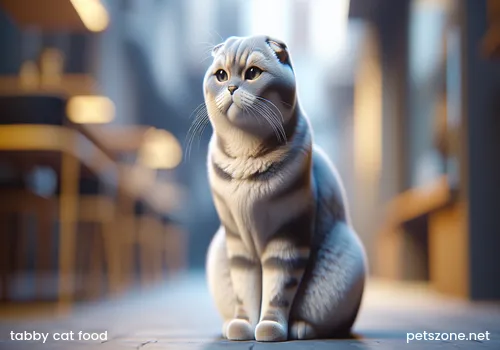
Core Principle: The Dining Table of Obligate Carnivores
This is the foundation for understanding all cat food choices. Cats’ body structure and metabolic mechanisms—from teeth and digestive tract to liver function—are designed to efficiently utilize animal protein and fat. This means:
- Protein is paramount, and must be animal-sourced: Cats require much more protein than humans or dogs. More importantly, they need certain essential amino acids from animal tissues, such as taurine. A deficiency in taurine can cause blindness, heart disease, and even death. Although plant proteins also contain protein, their amino acid profile is incomplete, with low bioavailability to cats, and cannot fully replace animal protein.
- Fat is the primary energy source: Cats’ bodies tend to prioritize burning fat for energy rather than carbohydrates. Animal fat is also a good source of essential fatty acids (like Omega-3 and Omega-6), which are vital for skin health and coat shine.
- Carbohydrates: the less, the better: Cats have a very low carbohydrate requirement, almost none. Their bodies lack enzymes to efficiently metabolize large amounts of carbs. Carbohydrates in cat food (grains, legumes, potatoes, etc.) mainly serve as binders for kibble formation. Excess carbs convert to fat storage, increasing the risk of obesity and diabetes.
- Moisture: the “hidden killer” for cats: Cats naturally have a low thirst drive and get most of their water from prey in the wild. Long-term feeding of dry food without sufficient water intake easily leads to urinary tract problems, especially in male cats.
Having understood these four points, you hold the “secret manual” to identifying good and bad cat food.
Reading Labels: Scrutinize Your Cat Food Like a Detective
Cat food packaging contains a wealth of information, but if you focus on several key points, you can distinguish genuine high-quality ingredients from marketing tricks like a pro.
1. Ingredient List: The soul of cat food, without exception.
The ingredient list is arranged by weight from highest to lowest. The first few ingredients determine the primary nutritional source. For obligate carnivores, an ideal ingredient list looks like this:
- The top ingredients must be clearly defined animal meats or meat meals: For example, “chicken,” “boneless chicken,” “chicken meal,” “salmon,” “duck,” etc. “Meat meal” here is not a bad word; high-quality meat meal is meat that has been baked, crushed, and concentrated, removing most moisture, so although placed lower, its protein content per unit weight may be high. The key is that the source must be clearly defined; for instance, “chicken meal” is much better than vague “poultry by-product meal.”
- Beware of large amounts of plant protein at the top: If the first few ingredients list large amounts of corn, wheat, soy, pea protein, potato protein, etc., even if the total protein looks high, the proportion of animal protein and bioavailability is likely low. It’s like forcing a carnivore to be vegetarian.
- Regarding “By-products”: This term often causes misunderstanding. Legally allowed “by-products” refer to animal organs, bones, blood, etc., which cats eat in the wild and are nutritious (think of cats catching a mouse—they don’t just eat lean meat). The key is whether the by-products are clearly sourced and high quality. For example, “chicken by-products” may contain claws, feathers, less valuable parts; but “chicken liver” or “chicken heart” are specific, high-value organs acceptable as supplementary nutrition. So don’t immediately rule out “by-products”; consider their position and clarity. If at the top and vague, then take caution.
- Beware of excessive fillers: Cheap cat foods often use grains (corn, wheat) or cassava starch as main ingredients, which provide calories and binders but offer little nutritional value for cats.
- Avoid artificial flavor enhancers, colors, preservatives: Good cat food uses natural preservatives (like vitamin E) and natural flavorings. Foods with overly bright colors or strong smells may contain unnecessary artificial additives.
2. Guaranteed Analysis:
This lists minimum/maximum levels of protein, fat, fiber, and moisture in the food. It provides a basic data framework but does not indicate the source or quality of protein/fat.
- Protein: Dry food usually requires at least 30%, the higher the better (of course, source matters). Wet food has lower protein due to moisture but when converted to dry matter basis (DMB), high-quality wet food often has very high protein.
- Fat: Dry food usually above 15%, providing energy and essential fatty acids.
- Fiber: Generally not more than 3-5%; too high may mean excessive plant ingredients or fillers.
- Moisture: Dry food usually under 10%; wet food ranges 75-80%. This is the biggest difference between dry and wet.
3. AAFCO Statement:
Look for the American Association of Feed Control Officials (AAFCO) statement on the packaging, such as “This product meets AAFCO cat food nutritional standards for XX life stage (adult/kitten/all life stages) as a complete and balanced food.” This means the formula meets at least the minimum AAFCO nutritional standards and can be fed as a main diet long term. Foods without this statement may be treats or supplements, not main meals.
Dry Food, Wet Food, or Combination Feeding?
This is like asking whether to have rice, noodles, or dumplings for lunch — all have reasons, depending on the “diner’s” and “chef’s” needs and conditions.
- Dry Food (Kibble):
- Advantages: Convenient to store and feed, relatively low price. Some believe it helps dental health (limited effect, less than professional dental treats or raw bones).
- Disadvantages: Low moisture (about 10%), long-term exclusive dry food feeding can lead to water deficiency, increasing urinary diseases risk. Usually higher carbs (to maintain shape).
- Wet Food:
- Advantages: High moisture content (75-80%), highly beneficial for urinary health. Usually higher protein (DMB), lower carbs. Generally better palatability.
- Disadvantages: Higher price, requires refrigeration after opening, spoilage risk, less convenient to feed.
- Combination Feeding:
- Advantages: Combines pros of both dry and wet — ensures adequate hydration while retaining dry food convenience and economy. Many vets and nutritionists recommend it.
- How to do it: One meal wet, one dry; or mix a small amount of warm water or unsalted chicken broth into dry food to increase moisture and palatability. Watch total calories to avoid obesity.
For tabby cats, considering their retained wild survival habits (such as not readily drinking from water bowls), it’s especially important to provide enough water. Hence, I personally prefer at least using wet food as a supplement, ideally a wet food-dominant mixed feeding mode with dry food as supplement or treat.
Not all “Grain-Free” is equally good, and not all “With-Grain” is equally bad
“Grain-free” was once highly praised, with grains considered allergens and unhealthy. But this is an over-simplification.
- The intention of “Grain-Free”: to reduce potential grain allergies and lower carb content in cat food.
- Issues with “Grain-Free”: To replace grains as binders, many grain-free foods use large amounts of legumes (peas, lentils, chickpeas), potatoes, or cassava. Though not grains, these ingredients also have high carbohydrates. Recently, the FDA has investigated links between high legume content in grain-free dog food and canine dilated cardiomyopathy (DCM) — mainly for dogs, but the effect on cats is still under study; plus, legume proteins are less digestible for cats than animal proteins.
- Grain choices in “With-Grain” foods: High-quality with-grain cat food may use small amounts of easily digestible grains like brown rice or oats, providing reasonable carbs and unlikely causing allergies.
Therefore, when judging cat food quality, don’t focus on the “grain-free” label, but on what ingredients are actually used, their positions, and the proportion of animal proteins. Grain-free food with large amounts of pea and potato binders may be worse than a with-grain food based on meat with a little brown rice.
Personalized Needs and Observation
Remember, every cat is an individual. Choosing cat food is like tailoring clothes for them.
- Age: Kittens need higher calories and protein for growth; senior cats may need easily digestible food with added joint support or kidney care ingredients.
- Health Condition: Cats with urinary issues (especially males) are strongly recommended to have mainly wet food; cats with digestive problems may need hypoallergenic or easily digestible formulas; obese cats need calorie control.
- Activity Level: Active cats require more energy.
- Palatability: No matter how good the food is, it’s useless if the cat won’t eat it! Cats have their own flavor preferences and may prefer chicken, fish, or a certain texture.
The best method is: Based on the above principles, select two or three cat foods meeting the standards (different flavors or brands), and trial feed. Meanwhile, closely observe your tabby cat:
- Mental state and vitality: Is it lively and active?
- Weight: Maintaining a healthy range?
- Feces: Formed, neither too loose nor too hard, color normal?
- Skin and coat: Healthy and shiny?
- Water intake: Feeding more wet food and drinking less water is normal; but if only eating dry food and not drinking much, it deserves attention.
Through observation, you will find the “destined food” that suits your tabby cat best.
Some Practical Tips:
- Gradually change food: Don’t switch cat food abruptly to avoid digestive issues. Use a 7-10 day transition, gradually increasing new food proportion and reducing old.
- Regularly check weight: To prevent obesity or weight loss.
- Always provide clean fresh water: Especially for cats eating dry food. Try flowing water sources (water fountains) or place water bowls in multiple locations at home.
- Don’t frequently change food: Once you find a suitable food, unless special circumstances (such as cat discomfort or brand problems), avoid frequent changes as it disrupts intestinal stability.
In summary:
Choosing cat food for your tabby is not about the loudest brand ads, nor empty labels like “grain-free” or “natural,” but returning to their physiological essence as obligate carnivores. Carefully read the ingredient list, prioritize animal proteins at the top, clear ingredients, and avoid excessive unnecessary additives. Combine the advantages of dry and wet food, provide enough water. Finally and most importantly, observe your cat; their health will tell you how good the food you chose really is.
Providing high-quality food to these “little overlords” who once showcased survival skills on every street corner is the best love you can give, and the foundation for them to enjoy a peaceful “retirement” life indoors. I hope this guide helps you cut through the fog of the cat food market and find the truly good food for your tabby lord.
